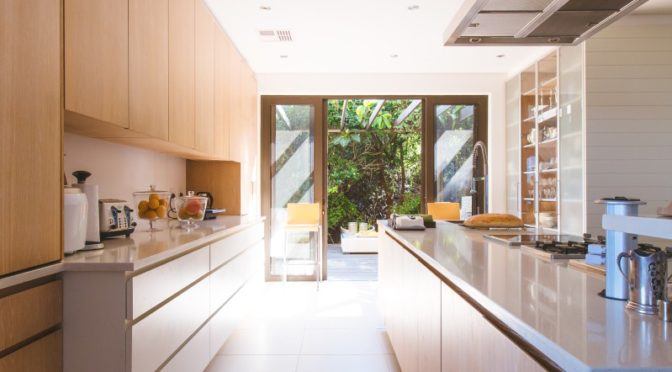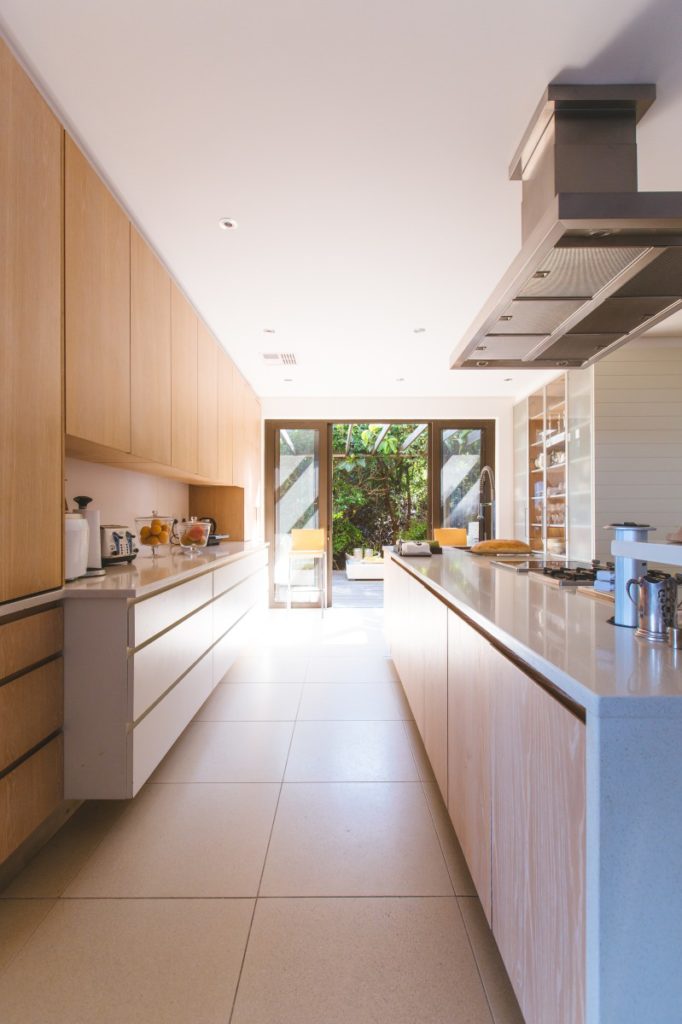
If you want bare flooring and don’t want hardwood floors, which are by far the most popular option, you’re probably going to consider ceramic flooring.
Given their advantages, it’s not hard to see why they’ve grown in market share in the last few years in the US and Canada. Ceramic floors are known for their versatility and resistance to staining and water damage. However, as with every hard tile, they will work better in some locations and situations than others.
Today we’ll look at the pros and cons of ceramic tile flooring, and keep an eye on costs, value, and other benefits and drawbacks to help you figure out if it’s the best flooring choice for your home, town-house, or condominium.
What are the pros and benefits of ceramic flooring tiles?
Perhaps the most salient advantage of ceramic tile is its resistance to water damage. Ceramic flooring tiles come in two flavors: glazed and unglazed. Glazed tiles include a glazing, or protective seal, on top of the tile, that make them effectively waterproof, humidity proof, and stain-proof.
As a result, if you’re looking for a flooring to use in areas with high levels of moisture, including kitchens, bathrooms, and basements, a glazed ceramic floor is one of the best choices money can buy. It’s important to note that unglazed ceramic tiles don’t have the same level of protection against liquids and will require sealing to function in wet environments.
Beyond the tiles themselves, you’ll also want to seal your grout lines, because if you don’t, they’ll take on moisture from water, weaken the structural integrity of your flooring, and eventually lead to mold growth.
How durable is ceramic tile and what kind of maintenance is required?
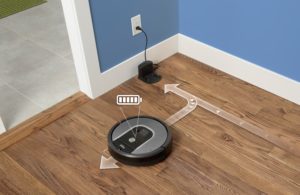
That said, ceramic tiles are among the most durable surfaces you can buy. The tiles are very resistant to cracking and are unlikely to break during normal use. You can easily get 10 to 20 years or more from a well-maintained ceramic floor, and if you do crack a tile, you can replace floor tiles with a bit of time and effort on your own.
Unlike some bare floors, you don’t need much time or effort to keep ceramic floors in good shape. Once your tiles are glazed, stains, spills, and dirt will simply sit on a tile the way they would inside a ceramic cup, which means you can wipe or mop them up with ease. A typical maintenance schedule won’t involve more than weekly sweeping or vacuuming.
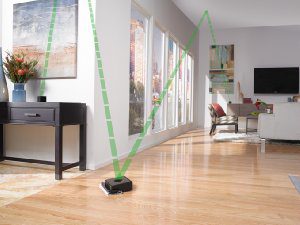
It’s best to use a Parquet head or similar soft brush head to polish the floors while cleaning them, but there are plenty of people who outsource both vacuuming and mopping tasks to domestic robots; a Roomba 960 will do a fine job of vacuuming tiles while a Braava 380t will mop them well enough to largely replace a manual one in most homes. If you do end up with a stain now and then that can’t simply be mopped off with water, you’ll be able to use a wide range of heavy duty cleaners and elbow grease to scrub it out without fear of damaging the tiles, as they’re highly resistant to chemical abrasion.
What are the cons and disadvantages of choosing ceramic flooring?

Perhaps the biggest drawback to choosing ceramic tiles for bare flooring is just how hard they are underfoot. While the hardness is key to their durability and dead-easy cleaning characteristics, it also makes them a pain to stand on–sometimes literally.
As a bit of background, there are essentially three types of floor coverings: soft floors (carpet being the most famous example), resilient floors (vinyl, cork, rubber, linoleum, asphalt, and seamless floors), and hard floors (solid wood, engineered wood, laminate, natural stone, and ceramic and porcelain tiles). Soft floors are the most comfortable but least durable, hard floors are the least comfortable but most durable, and resilient floors are in between in both categories. Ceramic tiles fall squarely, if you’ll excuse the pun, on the hard side. You can’t soften them with padded underlayments; they’re hard from the start and won’t become gentler with age.
If you want soft or warm ceramic flooring, you’ll need area rugs, and lots of them
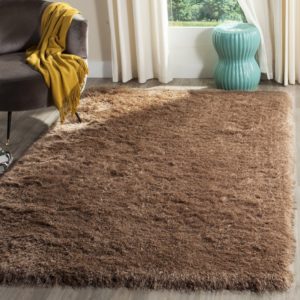
As a result, if you have limited furniture in your home and guests will spend a lot of time standing or sitting, they’re not going to be happy doing so on ceramic tile floors. You can ameliorate the hardness to a large degree with area rugs and throw rugs, depending on the pile you choose. We’d recommend high piles and soft carpet fibers to make your ceramics as comfortable as possible. That said, if you find yourself tempted to cover most of your ceramic floor with rugs because you can’t stand how hard it is, that’s a good sign that you’d be better suited to a different floor covering.
Similarly, ceramic tiles are good thermal insulators and poor thermal conductors, which means they aren’t going to hold on to heat–at all. Think of metals, which are the opposite. Metals gain heat and lose it rapidly, which is why your car will feel hot to the touch in summer and cool in the winter. Ceramic tiles, in contrast, gain heat very slowly, which means they’re going to feel cold all winter long under your feet. While they lose heat slowly, because they rarely get warm to begin with, you’re not going to enjoy warm tiles unless you live in a hot climate. Once again, you’ll want to invest in rugs, but this time, for warmth.
Are certain vacuums better suited for effectively cleaning ceramic floors?
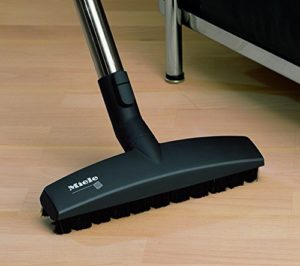
While you can use just about any vacuum cleaner to maintain a ceramic floor (including robotic vacuum cleaners), if you want to polish your floors while cleaning them, we typically recommend giving bare floors like ceramics the Parquet brush treatment. A Parquet brush provides a good balance of suction and sheen to help clean your floors while managing dust efficiently.

We also recommend buying vacuums that will handle more than ceramic floor tiles, but all bare floors and every kind of carpet you might have in your home, as it’s more efficient to use one tool to manage a household instead of switching from machine to machine as you move from one floor to the next. Two vacuums that offer buy-it-for-life reliability, Parquet heads, and the ability to clean any carpet pile and style are the Miele Complete C3 Cat & Dog (reviewed here and here) and Miele Compact C2 Electro+ (reviewed here and here). We like both, but prefer the Cat & Dog for the additional power it offers when dealing with allergens.
![]() You can buy the Miele Complete C3 Cat & Dog here on Amazon or buy the Miele Compact C2 Electro+ here.
You can buy the Miele Complete C3 Cat & Dog here on Amazon or buy the Miele Compact C2 Electro+ here.
![]() Canadians can buy the Miele C3 Cat & Dog here or buy the Compact Electro+ here.
Canadians can buy the Miele C3 Cat & Dog here or buy the Compact Electro+ here.
 If you find our research on PMC helpful, you can follow our efforts to keep maniacally reviewing home cleaning tools by shopping through our links above. We promise to keep fighting the good fight against every horror children, animals, and grown, yet messy humans can inflict upon a clean home.
If you find our research on PMC helpful, you can follow our efforts to keep maniacally reviewing home cleaning tools by shopping through our links above. We promise to keep fighting the good fight against every horror children, animals, and grown, yet messy humans can inflict upon a clean home.

